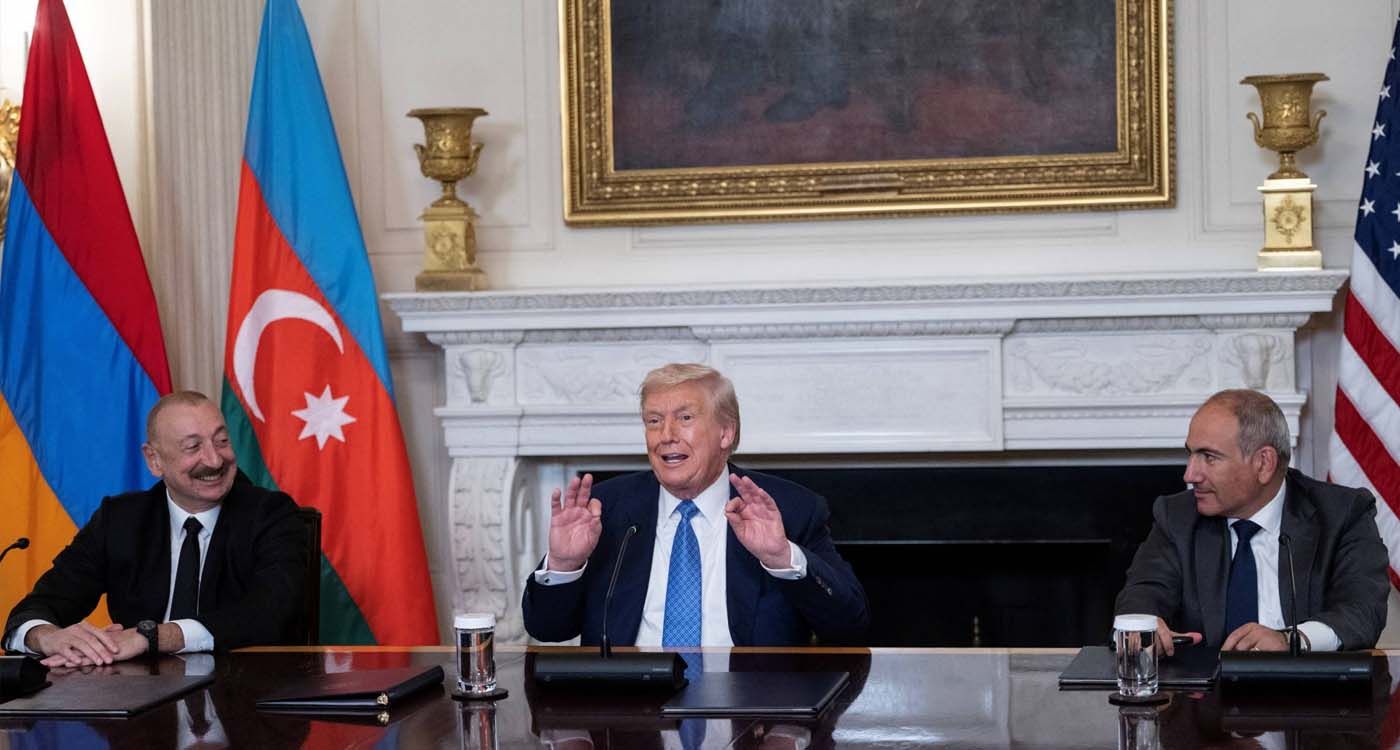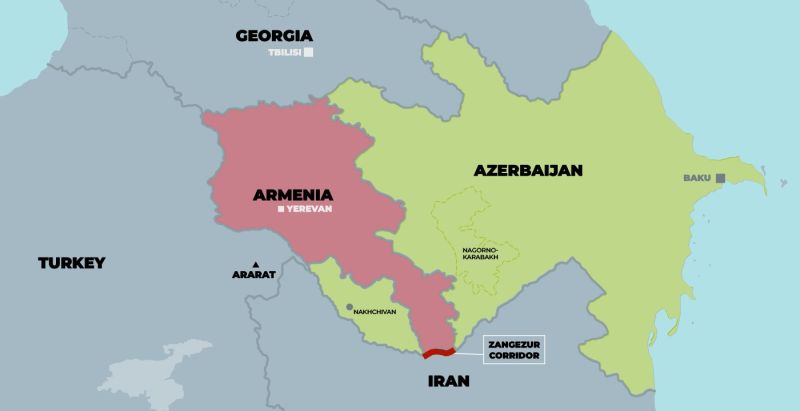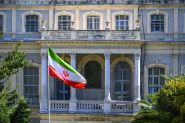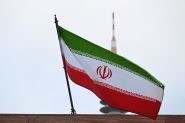- Home
- Middle East
- Tehran’s Unease About the Zanguezur Corridor

US President Donald Trump (center) speaks as Armenian Prime Minister Nikol Pashinyan (right) and Azerbaijani President Ilham Aliyev look on, following the signing of an agreement in the State Dining Room of the White House, Washington, D.C., on August 8, 2025. ©Andrew Caballero-Reynolds / AFP
The peace agreement signed on August 8 between Armenia and Azerbaijan could mark a turning point for the South Caucasus. However, for Tehran, one of its most significant elements – the creation of the Zanguezur Corridor, linking Azerbaijan directly to its Nakhchivan exclave through southern Armenia – poses a serious strategic threat.
Stretching 43 kilometers, the corridor would reduce the distance between Turkey and Azerbaijan by 343 kilometers compared to the current route via Georgia. It would also cut freight transport time between Europe and China by a full day compared to the existing “Middle Corridor,” a critical trade route bypassing Russia and Iran.

A Potential Gateway for Israel and NATO
According to the Atlantic Council, some Iranian officials fear that this corridor could serve as a direct entry point for Israel and NATO into the Caucasus. Tehran’s main concern is Azerbaijan’s growing military capabilities, backed by its Israeli and Turkish allies, which shift the regional balance of power to Iran’s disadvantage.
Maintaining a land border with Armenia is vital for Iran. As noted by the Caspian Policy Center, Tehran worries that the corridor’s opening will strengthen Turkey’s influence while diminishing Iran’s role in the region. It also raises concerns for Iran’s northern provinces, which have majority Azeri populations.
For Tehran, losing this direct access to Armenia would significantly weaken its influence in the Caucasus and simultaneously bolster the Ankara-Baku axis.
Excluded from Key Trade Routes
The Zanguezur Corridor is part of the Middle Corridor, a trade route connecting China to Europe while bypassing both Russia and Iran. Currently, it carries about 6 million tons of cargo annually, compared to over 100 million tons on the Northern Corridor through Russia.
The World Bank projects that by 2030, the Middle Corridor’s volume could increase to 11 million tons, increasing trade between China and the European Union by 30%.
This trend heightens Iran’s concerns about being sidelined in Eurasian trade networks. As the Atlantic Council observes, Iran’s neighbors and even some of its allies have increasingly excluded it from key connectivity projects.
Iran’s potential isolation largely results from international sanctions, together with insufficient infrastructure and funding, all of which limit Tehran’s ability to serve as a major regional transit hub.
The Threat of Strategic Encirclement
For Tehran, the Zanguezur Corridor is part of a wider strategy aimed at encircling Iran, Russia and China.
The Gulf International Forum cites a report from Tehran’s Strategic Council on Foreign Relations warning of a “conspiracy to create a NATO ‘Turanian Corridor’” that would bring NATO forces directly to Iran’s northern border, Russia’s southern border and China’s western Xinjiang region. This plan is seen as an attempt to encircle these countries and pave the way for their eventual disintegration.
In a recent phone call with Armenian Prime Minister Nikol Pashinyan, Iranian President Masoud Pezeshkian warned of possible US actions in the Caucasus aimed at advancing hegemonic ambitions under the guise of economic investment and peace guarantees, according to an official Tehran statement.
As noted by the British defense think tank RUSI, Iran remains “an unpredictable element” in the Caucasus, capable of influencing the project’s outcome.
For Tehran, the stakes are twofold: preserving its strategic depth to the north and preventing exclusion from emerging Eurasian trade routes.
In this geopolitical contest, the Zanguezur Corridor is far more than a transit route; it is a flashpoint revealing the intense power rivalries reshaping the South Caucasus.
Read more





Comments